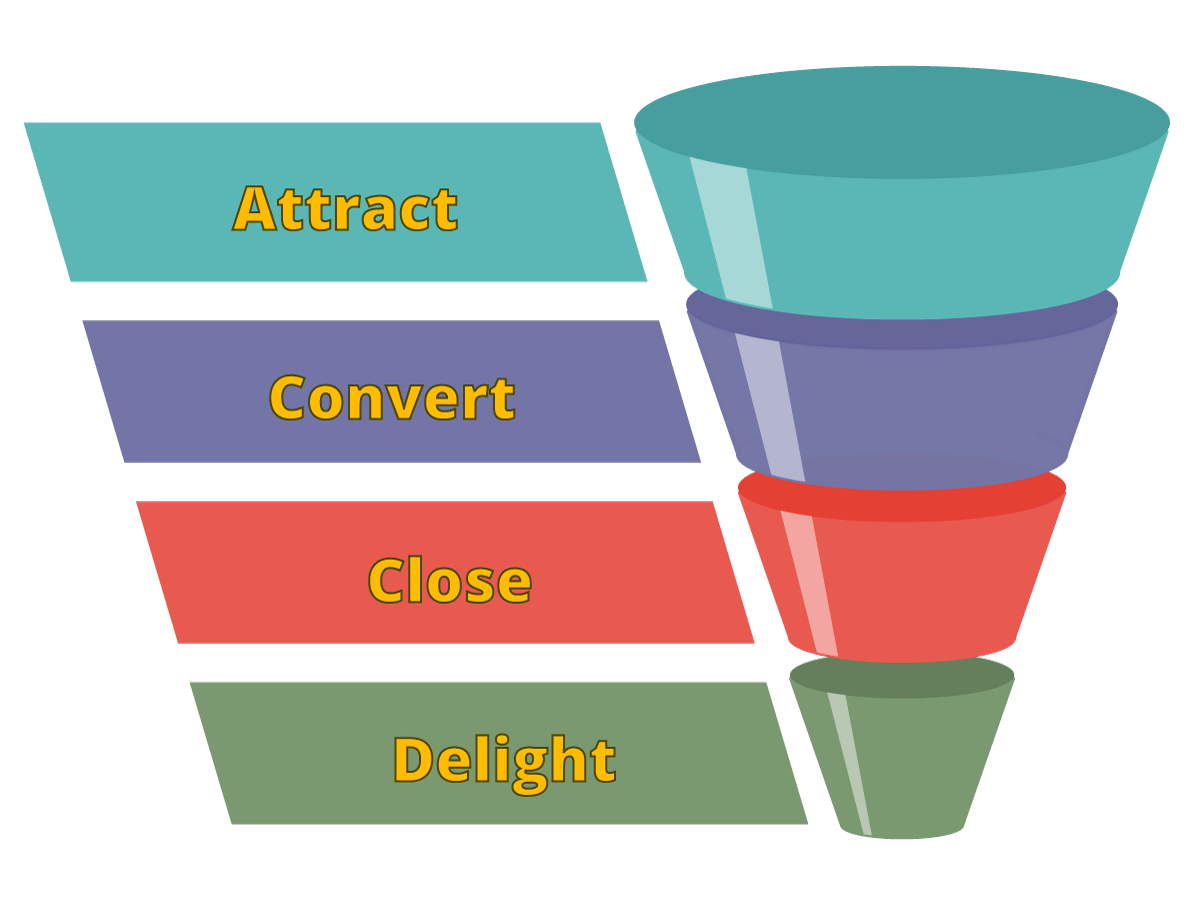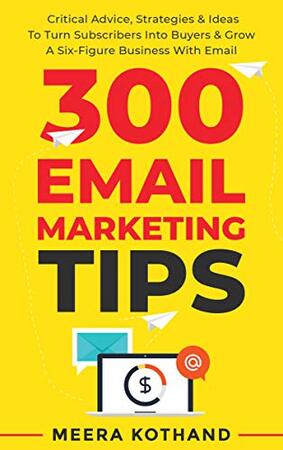Table of Contents
Email marketing is still one of the most profitable marketing methods. It’s becoming increasingly competitive to get your contact’s attention and start productive discussions over email. This is due to the growing number of firms utilising this strategy. Trust and real, long-lasting connections with contacts are now the cornerstones of a successful email marketing campaign. Whether your company has one employee or fifty thousand, we can help you develop an email marketing strategy that yields a substantial and quantifiable profit. Let’s go into the best practises for attracting and keeping your email list subscribers.
Important email list practices
1. You need to use an inbound marketing approach
The proper individuals can be found, connections can be nurtured, and dialogues can take place that benefit both you and your consumers through email marketing.
However, success in your email marketing strategy cannot be achieved in isolation. Your ability to build a human, helpful, customer-driven email marketing approach that fits in with your larger inbound strategy will have a significant impact on your business’s success.
Learning how email marketing fits into the larger inbound framework is helpful. Email is the best way to interact with new contacts, please them, and ultimately transform them into satisfied brand advocates.
There are several ground rules that must be established before you can begin developing a new email marketing strategy or refining an old one:
- Use appropriate computer programmes: In order to send targeted emails, your programme should sync with a contact database that stores information about your contacts’ characteristics and actions.
- Think about your talks from every angle: Your email recipients are not engaging with you in a vacuum. Aside from that, they’re checking out your blogs, interacting with you on social media, and chatting with a bot. Interact with your contacts in a way that works best for them. You need to provide them the information they need when they need it, using the medium that works best for them. Consider whether or not email is the best way to get your message through before launching an initiative of any kind.
- Correct objectives must be specified: People don’t purchase “what you do” but “why you do it,” as Simon Sinek puts it. Make sure to measure the efficacy of your email marketing. To do this it is essential to establish goals for both your overall plan and for each individual email.

2. Sort and subdivide your mailing list accordingly
The Direct Marketing Association (DMA) claims that targeted email marketing campaigns that make use of segmentation and triggers account for 77% of all email marketing’s return on investment. By dividing up your email list into subsets, you may target certain customers with relevant offers at just the right moment. In addition, the likelihood that your subscribers will interact with your message increases as its relevance increases.
Building trust with your contacts, improving conversions, and keeping your contacts engaged over the long-term are all aided by segmentation since you don’t deliver the incorrect messages to the wrong individuals at the wrong time.
There’s a risk of skipping this step and instead diving headfirst into database segmentation or fine-tuning existing ones. However, you must first create the proper groundwork before you can begin developing the appropriate
portions for your contextual messaging. In that light, consider these pointers:
- Maintain an orderly database. The contact, the contact’s properties, and the company, and their properties, are the three main components of any useful database.
- Get the necessary data. This will allow you to divide your recipients into relevant groups for your contextual emails. Important data about your contacts, such as their job title, company, and ambitions, may be gleaned from their buyer persona, and their position in the buying process can be determined by the information you collect about them.
- Get consent to gather both explicit and implicit information. Explicit data is information that a contact knowingly and willingly gives you, such as their contact details, corporate details, etc. Implicit data consists of information gleaned from users’ actions, such as their email open rates, site analytics data, and conversion rates. For contextual communications with contacts via email, you’ll need both implicit and explicit information.
Note: Make sure you have permission to email contacts in your database.
Additionally, while gathering information by email, be careful to follow any applicable laws, such as CAN-SPAM and the General Data Protection Regulation.
Both conveying the correct message to the right people at the right time and not sending the wrong message to the wrong people at the wrong time are critical functions of the segments you design. As the needs of each company are unique, the methods used to divide the market into useful chunks must be adjusted accordingly.
To be sure, you should divide your emails into 3 different groups.
- Based on stage. The first step is to divide your subscribers, leads, and customers into distinct groups based on lifecycle. In order to know where your contacts are in your sales funnel, you need divide them up into lifecycle parts. You may use the information in your lifecycle segments not just to determine who should get emails from you, but also to eliminate potential recipients from consideration. Customers shouldn’t get a lead nurturing offer that’s meant just for leads.
- Based on buyer characteristics. Your customer personas are another type of target audience that has to be carved out. These pieces are excellent building blocks for something greater. As every business is unique, it’s likely that you’ll need to create customised checklists. In a major corporation, for instance, the marketing and sales departments may be segmented according to product line, geographic region, firm size, or industry.
- Based on email interaction. If you divide your contact list into manageable chunks, you can avoid sending emails to the wrong individuals. Contacts that have unsubscribed, hard bounced, are ineligible, and haven’t read your emails in a year should all be put onto separate lists.
3. Focus on creating high performing quality emails
Email marketing has been shown to provide a $38 return on investment for every dollar spent. In addition, email is the primary driver of return on investment for 59 percent of marketers. Not too shabby, huh?
However, the return on investment is not assured simply by writing an email and sending it. In order to become consumers, buy from you, or recommend you, your contacts must see value in the discussions you have with them.
How can you and your staff come up with such compelling email content time and time again? Some fundamental guidelines are as follows:
- 1. Create a SMART objective. Set a SMART (specific, measurable, achievable, relevant, and timely) objective for each email you send. Then, check that every section of the email contributes to the overall purpose. A SMART objective may look like this: Within the next six months, we will improve the quality and specificity of our lead nurturing campaigns in order to boost trial sign-ups by 10%.
- 2.Time and target your email. When you deliver a message that is very relevant to the recipient, you increase the likelihood that they will take some sort of action. Let’s take a closer look at these three parts:
- The right message: Sending contacts an email with the appropriate message and amount of context is key. For the sake of clarity, your writing needs to make sense to whoever is reading it.
- The proper person: this boils down to the already discussed practise of developing niche segments.
- At the precise moment: At each point of the purchasing cycle, a distinct set of purchasers will be interested in reading different types of material. To send an email at the ideal moment, you must analyse the stage of the buyer’s journey your contacts are currently in and tailor the message accordingly.
4. Optimize emails for conversion
Once you have decided upon a target, you will want to encourage conversions that get you closer to your objective. You should focus on increasing both your email opens and clicks. Your ability to produce interesting email copy that adds value to your readers and earns their confidence is crucial.
Increase openening rate: In order to increase the number of individuals who read your emails. It is important to write attention-grabbing subject lines. Pay close attention to the benefits you’re offering right away. When doing so, it is helpful to employ personalisation tokens such as the recipient’s name or location to establish a connection.
Increase click rates: Avoid using clickbait; it’s unprofessional. When a consumer reads your email, they want to know what they’re getting out of it immediately. Offer a single, compelling call to action to get people to click through to your link and complete the desired activity.
Below is a re-engagement email from Typeform that strikes the ideal balance between lightheartedness, informality, and clarity. The phrase used in the call to action, “Get Inspired,” is direct, powerful, and relates to the customer’s yearning for inspiration.
Read the following article to learn more about optimising your email conversion (clickthrough rates).
5. Use a straightforward email template that fits
It’s important for your company to tailor the emails it sends to its contacts based on the tasks at hand. As an example, you’ll need to use distinct file types while distributing blog updates and marketing a product or service. Determine the various kinds of emails your company often sends, and then design a collection of uniform, brand-compliant templates.
The most effective designs are those that are easy to understand and use, making communication with your contacts a breeze.
Your Email Marketing Approach
Let’s move on to some strategies and recommendations for improving your email marketing for the long haul.
1. Nurture leads for a deeper relationship
Lead nurturing enables you to cultivate and strengthen connections with potential customers so that you may win their business when the time is right. The trick is to get in touch with your leads at the right time and in the right way.
Recent research found that 39% of marketers believe “automatically sending emails based on triggers” is the most successful strategy for increasing email engagement. Creating automatic behavioural emails that send to prospects based on their interactions with your organisation across all of your channels is a very effective method of engaging your leads.
It might be difficult to choose the best email content for nurturing prospects. You should send four type of emails as part of lead nurturing campaign. This applies regardless of your business’s aims.
Each of these emails is focused on a certain objective that relates to the original motivation for sending it.
Emails that create trust. These emails build trust and value with your contacts, increasing the likelihood that they’ll read future correspondence from you. You may, for instance, write an email meant to inform leads on a subject they’ve showed an interest in.
Emails with links to helpful files and other resources. You may learn a lot about your leads’ interests and preferences by sending them informative emails. Here, you may give some helpful advice in the body of your email. You may link to a helpful download (like an e-book or cheatsheet) in the subject line.
Emails containing some sort of call to action. Emails with a clear call to action present the campaign’s end objective as the obvious next move for the recipient to make. It needs to get straight to the point. The call to action in this email will be unique to the task at hand in your workflow, even if all emails contain them. You may suggest that the potential customer speak with a sales representative or arrange for a demonstration.
Goodbye emails! When sending a lead a breakup email, make it crystal clear that this is the last communication between you. The objective is to either maintain their interest or figure out where your messaging went wrong.
2. Test emails and double check email delivery
Having useful, non-spammy content was formerly the main factor in having your emails read. That and a lot more can be done nowadays. Providers of email services have been more wiser in recent years, and now rely heavily on indicators of user interest (such as opens, responses, and clicks) when deciding whether or not to deliver a message to a recipient’s inbox.
Also, laws regarding email marketing (such as CAN-SPAM and GDPR) are more stringent now than they have ever been.
There has never been a more pressing need to develop a highly efficient email deliverability strategy geared at attracting the ideal clientele and keeping them satisfied through the provision of valuable, personalised content. In email marketing, the inbox is like the bottom of a funnel: without it, you won’t receive any of the benefits at the top, such as an open, click, sale, or repeat customer.
Is there a way to guarantee that your emails will reach their intended recipients? In that light, consider these pointers:
Collect express consent. In order to comply with GDPR, you must first obtain permission from each contact before contacting them again. You may do this in a number of ways, including by including a checkbox on your contact form that asks for permission to contact them. Obtaining consent beforehand also helps to establish trust, which is vital in any kind of partnership.
Track the number of unsubscribes and hard bounces. Finding out what your contacts have in common that could be increasing your unsubscribes or hard bounces can help you make the required adjustments if you see a pattern. Make sure to make re-engagement efforts. There will be a larger risk of harm to your sender reputation and email deliverability rates if a significant portion of your list stops opening and clicking on your emails. Send customised re-engagement emails to your dormant subscribers, catering to their specific interests and requirements.
Point out where you want to stop. If your re-engagement tactics are unsuccessful in bringing your contacts back, it may be time to end your email relationship with them, at least temporarily. Neither of you is benefiting from the relationship any more. And hey, they can always re-subscribe if they change their minds and want to interact with you again. Simply warn them in advance before removing them from your mailing list.
3. Track and optimize user email interaction metrics
What gets measured, gets better; it’s a cliche for a reason. The success of your email marketing campaign may be gauged by tracking its open rates, click-through rates, and other metrics so that you can fine-tune your approach.
Here are the most important indicators to track. These will help you dive deeper into the data, so you can take practical measures to enhance your strategy:
- Delivered. The number of valid email addresses that received your message is the measure you call “emails delivered.” If you see a change in the quantity of emails delivered over a certain period of time, you may want to review your email deliverability strategy (some suggestions for which are provided above).
- Opened. Examine the ‘open’ rate of your emails to see if your contacts found the content to be of interest. If an email has a poor open rate, try changing the subject line and preview text to make it more appealing to the recipient.
- Clicked. It’s not uncommon for emails to have a high open rate but a low clickthrough rate. Your email may be failing to convey your intended message because it is attempting to accomplish too much. In its place, you should highlight a single, distinct call to action.
- Conversion. Whoever successfully completes your desired action is a “conversion,” and their level of engagement is an indicator of their success. Your contacts must read your email, click on the links it contains, and then do the appropriate action for you to succeed. Improve conversion rates by optimising each of these stages. Make sure the call to action is something your contacts would actually be interested in doing.
4. Your return on investment (ROI) is important
Your return on investment (ROI) is one of the most crucial metrics you can analyse in your email marketing strategy. It reveals how successful your email campaigns are. This is the total profit your company makes from its email marketing efforts.
You can figure out the return on investment for your email marketing campaign by using this formula:
First, take the increased sales revenue and deduct the cost of the campaign. The extra sales you earned (let’s say $1,000) minus your initial investment (let’s say $100) would net you $900.
Divide that number by the entire amount of money spent on the campaign in Step 2. For instance, if you spent $100 and made $900, your return on investment is 9.
Third, scale the number by a factor of 100. Simply multiplying 9 by 100 yields a result of 900% for the situation described.
The return on investment here is 900%.
If you want to increase your return on investment (ROI), all you need to do is examine your email stats, identify where the issues and possibilities are, and adjust your approach appropriately.
Finally, we’ve included a template to assist you in the preparation, implementation, and evaluation of your email marketing campaigns; here’s a sneak peek:
An effective email marketing strategy adapts to the changing needs of its target audience.
The requirements of your company’s potential clients and patrons will evolve as your business expands. It is imperative that both your overall email marketing strategy and each individual email you send adapt to these changes.
Continuing to learn about your clients and prospects is one of the finest things you can do to improve your email marketing strategy. Maintain consistent communication with your contacts. Solicit their input on a regular basis to get valuable insights. Try out novel approaches to capturing their attention and fine-tune your approach based on what works best.
Although your email marketing strategy should develop with time, one constant remains: the key to a successful email marketing campaign is establishing credibility and nurturing connections based on genuine interaction.
Even now, email marketing remains one of the most profitable promotional methods. Developing reliable relationships with contacts is the cornerstone of an effective email marketing strategy. You must master the art of sending targeted emails to groups of contacts based on where they are in the buying process.
Further reading
This best seller books gives you a framework for your email marketing strategy. The contents of this book is not about building a hugh email list. Email marketing is much more than this. You need a consistent and comprehensive strategy to be successful at email marketing and bring in customers.
Here a few topics discussed in this guide:
- Branding and how it relates to email marketing,
- 7 essential goals to achieve with your welcome email
- Two critical points that should be included in your lead magnet
- 3 methods for planning your email editorial calendar
- answers to various critical questions that evert email marketers face.





